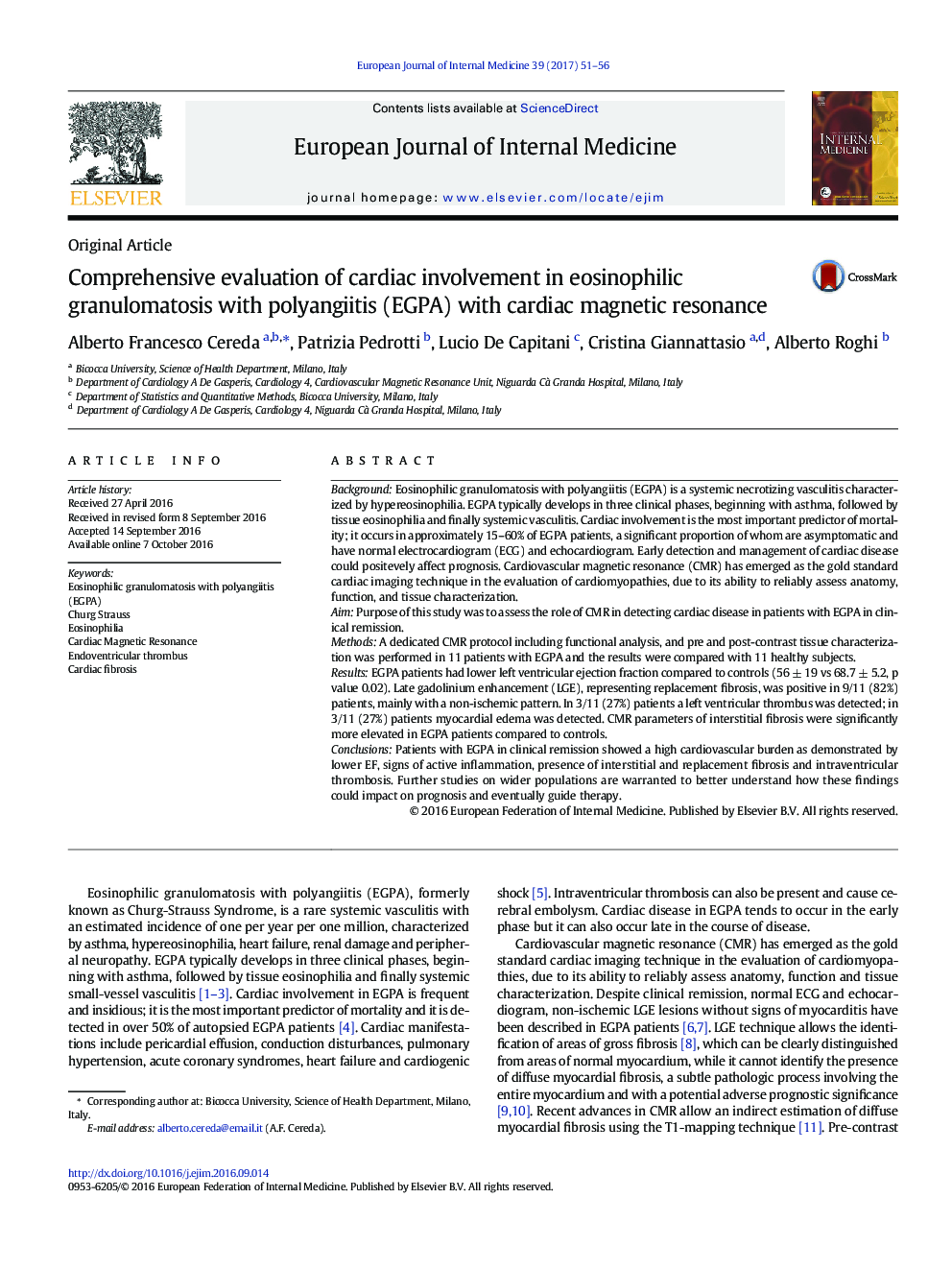| Article ID | Journal | Published Year | Pages | File Type |
|---|---|---|---|---|
| 5679092 | European Journal of Internal Medicine | 2017 | 6 Pages |
â¢In our small population, patients with EGPA in clinical remission showed significant cardiovascular burden.â¢CMR showed signs of inflammation and the presence of myocardial fibrosis.â¢A ventricular thrombus was detected in about 25% of our patients.
BackgroundEosinophilic granulomatosis with polyangiitis (EGPA) is a systemic necrotizing vasculitis characterized by hypereosinophilia. EGPA typically develops in three clinical phases, beginning with asthma, followed by tissue eosinophilia and finally systemic vasculitis. Cardiac involvement is the most important predictor of mortality; it occurs in approximately 15-60% of EGPA patients, a significant proportion of whom are asymptomatic and have normal electrocardiogram (ECG) and echocardiogram. Early detection and management of cardiac disease could positevely affect prognosis. Cardiovascular magnetic resonance (CMR) has emerged as the gold standard cardiac imaging technique in the evaluation of cardiomyopathies, due to its ability to reliably assess anatomy, function, and tissue characterization.AimPurpose of this study was to assess the role of CMR in detecting cardiac disease in patients with EGPA in clinical remission.MethodsA dedicated CMR protocol including functional analysis, and pre and post-contrast tissue characterization was performed in 11 patients with EGPA and the results were compared with 11 healthy subjects.ResultsEGPA patients had lower left ventricular ejection fraction compared to controls (56 ± 19 vs 68.7 ± 5.2, p value 0.02). Late gadolinium enhancement (LGE), representing replacement fibrosis, was positive in 9/11 (82%) patients, mainly with a non-ischemic pattern. In 3/11 (27%) patients a left ventricular thrombus was detected; in 3/11 (27%) patients myocardial edema was detected. CMR parameters of interstitial fibrosis were significantly more elevated in EGPA patients compared to controls.ConclusionsPatients with EGPA in clinical remission showed a high cardiovascular burden as demonstrated by lower EF, signs of active inflammation, presence of interstitial and replacement fibrosis and intraventricular thrombosis. Further studies on wider populations are warranted to better understand how these findings could impact on prognosis and eventually guide therapy.
